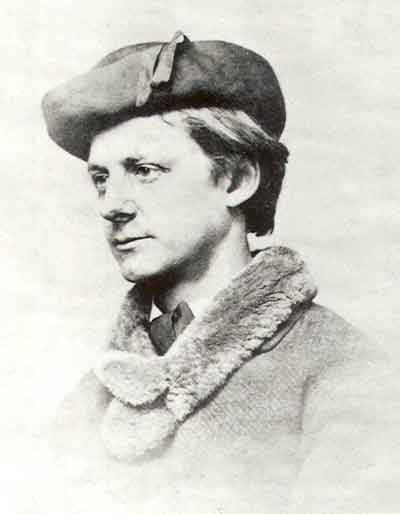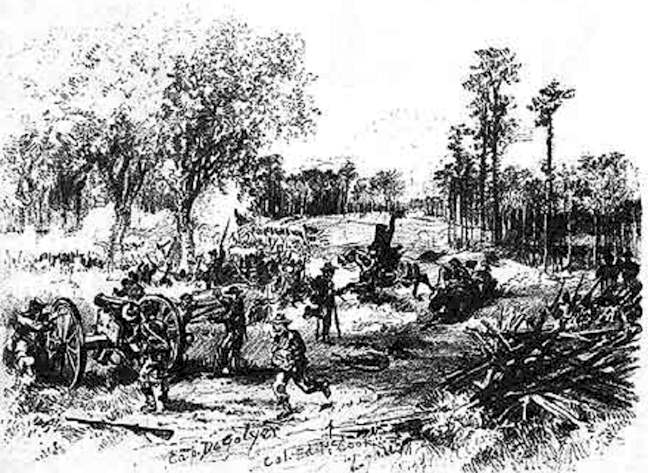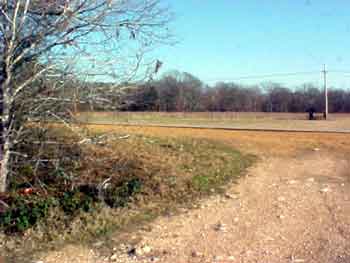|
Reporter Wounded at Battle of Raymond
"A Compact and
Vigorous Engagement at Close Quarters"
By Parker Hills
May 12, 1863 – Peering through the dust and smoke of battle, Theodore R. Davis, an artist and newspaper correspondent, was covering the Civil War for Harper’s Weekly when a bullet whistled his way and hit its mark. Years later, Davis wrote, “there is still a reminder of the incident in the form of a scar on my left knee as large as a half-dollar, made by the bullet that killed my horse.” For weeks prior to receiving his wound at Raymond, Davis accompanied the Union army sketching scenes of Grant’s Vicksburg Campaign. He wrote, “To really see a battle…one must accept the most dangerous situations, for in most cases this can not possibly be avoided.” As for covering a battle, some mistakenly believed that a correspondent was immune to enemy or friendly fire. Davis recalled; “Many persons have said that since my duty was only to see, and not to fight, they should think that I would not be shot at, and so did not incur much danger of being hit.” Davis soon learned differently: “My most peculiar experience of this sort was having a sketch-book shot out of my hand and sent whirling over my shoulder.” Davis rode with the 12,000 blue-clad soldiers of General James McPherson’s Corps of General U.S. Grant’s Army of the Tennessee. In the predawn hours of May 12, 1863, the corps trudged out of Utica, Mississippi, and due to a spring drought, the dirt road from Utica to Raymond (following the alignment of modern Highway 18) was coated with inches of powdered dust. At 10:00 a.m. the Union column emerged from the dust cloud; topped a ridge about two miles south of Raymond; and eased down the hillside into the Fourteenmile Creek bottom. On the sandy banks of the creek the battle opened. On the field with the corps vanguard, Davis was immediately embroiled in the battle, and he described the scene: “A locality in which bullets flew thick and fast, and everybody was quite busy and active… The Raymond fight was not a great battle, but one of those compact and vigorous engagements at close quarters, without any protecting earthworks. Under such conditions it could last but a brief time before one side or the other gave way, and that time it was the Confederate soldiers who found the situation too uncomfortable to remain.” The ferocity of the battle for Raymond is verified by at least one of Davis’ recollections. He remembered observing Captain Stewart Tresilian, a Union engineer officer on General McPherson’s staff: “He was seated astride the topmost rail of the fence, across which, in some places, the fight was going on with clubbed muskets; which side the captain was most interested in was doubtful, for, with cap in his one hand and sword in the other, he was encouraging both parties to go in, and do their best, while he occupied a reserved seat, a most interested spectator. The man was the type of the soldier who loves a fight, and true stories of some of his doings seem almost too improbable to believe. I think he was unconscious of any danger, and I know that I was not, for in some of my sketch-books there are memorandum sketches of some battlefield occurrences which show plainly that the hand holding the pencil was unsteady; and jerky marks here and there make it pretty plain that the locality was an unsafe one.”
Fortunately for posterity Theodore Davis made his sketches. One drawing in particular has proven invaluable in interpreting the Raymond battlefield. Simply entitled “The Battle of Raymond,” Davis’ drawing and notes identify the location of Union Captain Samuel DeGolyer’s cannon, one of which sits squarely astride the historic Raymond-Utica road (old Highway 18 on the Raymond battlefield) about two hundred yards south of Fourteenmile Creek. Also in the drawing is General Logan, on horseback, riding forward to encourage his troops. Colonel Edwin McCook, commander of the 31st Illinois Infantry Regiment, was wounded and is depicted as he limped away with his right leg raised and two rifles serving as crutches. To the right of the drawing, behind the remnants of a downed rail fence, is General McPherson with Lieutenant Colonel W. E. Strong.
The drawing, which was not published in Harper’s Weekly, would have been forgotten had it not appeared in the July 1889 issue of St. Nicholas For Young Folks magazine, in an article Davis wrote entitled, “How a Battle is Sketched.” Now, as the Raymond battlefield is being preserved and interpreted, the sketch will serve a new purpose. Friends of Raymond, a non-profit volunteer organization which was chartered to preserve the history of the Raymond area, will use the sketch on a battlefield marker, next to a replica of one of Captain DeGolyer’s cannon, on virtually the same spot that Davis shakily put his pencil to paper. In his 1889 article Theodore Davis wrote: “I have found that a sure guide . . . was to go toward the place where the heaviest musketry fire was heard.” Today, we are the beneficiaries of Davis’ daring, as his century-and-a-half old drawings, hurriedly sketched as the bullets sliced through the air around him, are vital clues for battlefield interpretation.
|
Home
| Grant's March |
Gregg's March |
Battle
of Raymond | Order of Battle |
Commanders | Soldiers
Who Fought | Diaries & Accounts
| Copyright (c)
James and Rebecca Drake, 1998 - 2005 All Rights Reserved.
|


